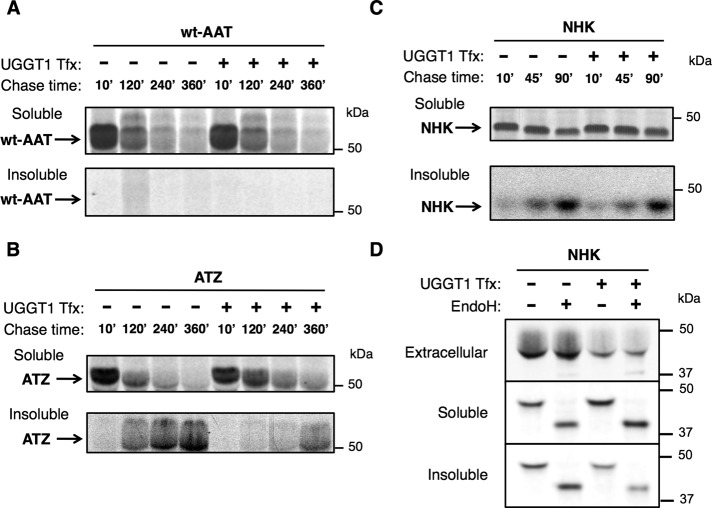FIGURE 2:
NHK and ATZ, but not wt-AAT, become insoluble over time. (A) Transient transfection of Uggt1−/− MEFs with wt-AAT ± UGGT1 and analysis by pulse chase at the indicated time points (Materials and Methods). No wt-AAT was detected in the insoluble fraction at any time point. (B) Same as A for ATZ. Here ATZ progressively accumulates in the insoluble fraction over time. (C) Same as A for NHK. Here NHK progressively accumulates in the insoluble fraction over time. Soluble NHK was run on a nonreducing gel because under reducing conditions, the reduced IP antibody physically pushes all NHK bands down to the same molecular weight. For A–C, four times the TCA-normalized amount of insoluble fraction was used for IP compared with soluble fraction (actual relative amount of insoluble ATZ and NHK is 25% of what is seen in the gel image). (D) EndoH digest of extracellular, soluble, and insoluble NHK after steady-state labeling. The majority of extracellular NHK is EndoH resistant, evidence of having Golgi-modified N-glycans typically found on secreted glycoproteins. NHK in the soluble and insoluble fractions is completely EndoH sensitive, indicating that these forms are not modified by Golgi-localized N-glycan–modifying enzymes.

